Tourism blooming at Fujian village known for traditional floral headdresses
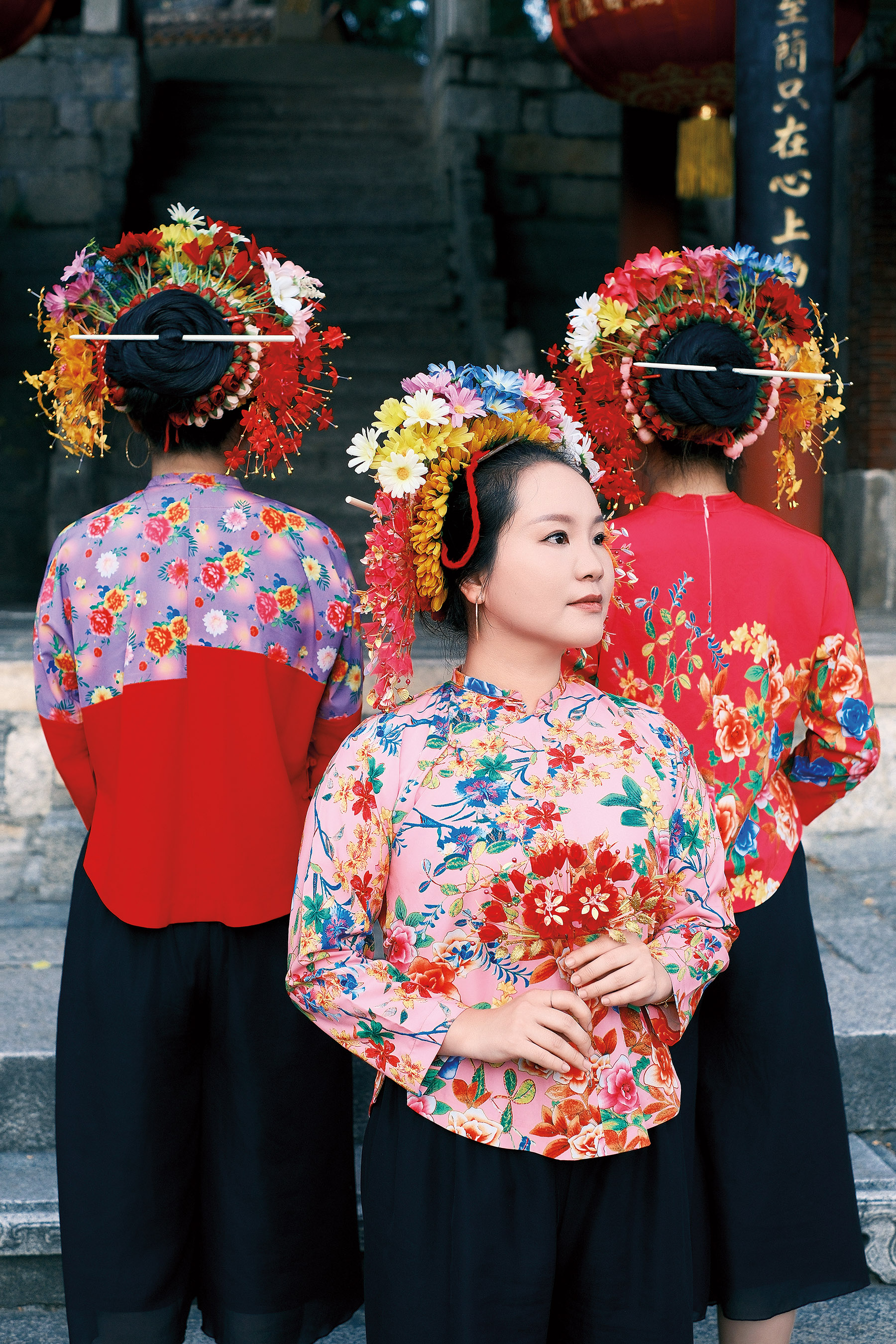
The soft spot that ancient Chinese women had for flowers has been widely celebrated through classic art like the well-preserved Tang Dynasty (618-907) painting by Zhou Fang, Court Ladies Adorning Their Hair with Flowers.
This fondness, having survived the ages and also transcended class, is currently regaining momentum in the small fishing village of Xunpu, which is tucked away in Quanzhou, Fujian province, where women wearing floral headdresses can be seen coming and going in the narrow alleys.
These days, residents are either to be found shucking oysters, or busily arranging floral headdresses for the crowds of visitors.
“It has long been a part of our tradition used to express our love for life and wishes for happiness,” said Huang Liyong, who opened a studio to provide headdress-making, makeup and photography services, aiming to repopularize the floral art for over a decade.
As a child, her grandmother often made a point of placing one on her head before she went out, saying that good fortune would follow her, according to Huang, who is now in her 30s.
“I was also under the impression that when people wore the headdress, joyous events would take place, such as weddings and festival celebrations,” Huang said, adding that the practice has auspicious connotation.

The floral accessory, known as zanhua or zanhuawei, has been part of the traditional practices and cultural expression of Xunpu women for more than 800 years, alongside other unique forms of clothing and accessories that were collectively named a form of national intangible cultural heritage in 2008.
The women of Xunpu are known for being hardworking, resilient, frugal, and family-oriented. They were adept at weaving nets, fishing and taking care of domestic affairs, making them the backbone of the family. Whether it was winter or summer, when the tide receded, they would work on the tidal flats, farming oysters, and harvesting fish, shrimps, and clams to sell at the market.
The coastal lifestyle has given the appearance of the village and the women’s daily clothing distinctive characteristics. For example, Huang said that oyster shells have been used to build walls that are resistant to humidity while keeping interiors cool in the summer.
Traditional Xunpu attire has carefully tailored wide-sleeved gowns and loose trousers, making it easier to work on the seashore. The tops are primarily green or light blue and the loose trousers, mostly black or blue, Huang said.
Hard work drove Xunpu women to pin their hopes for easier and better lives with colorful flower headdresses. They first tie their hair in a bun with a red ribbon and adorn it with a hairpin. They then decorate the bun with strings of fresh flowers, creating a colorful and vibrant floral cluster. The flowers vary with the season, from peony and lily to camellia, magnolia, and chrysanthemum.
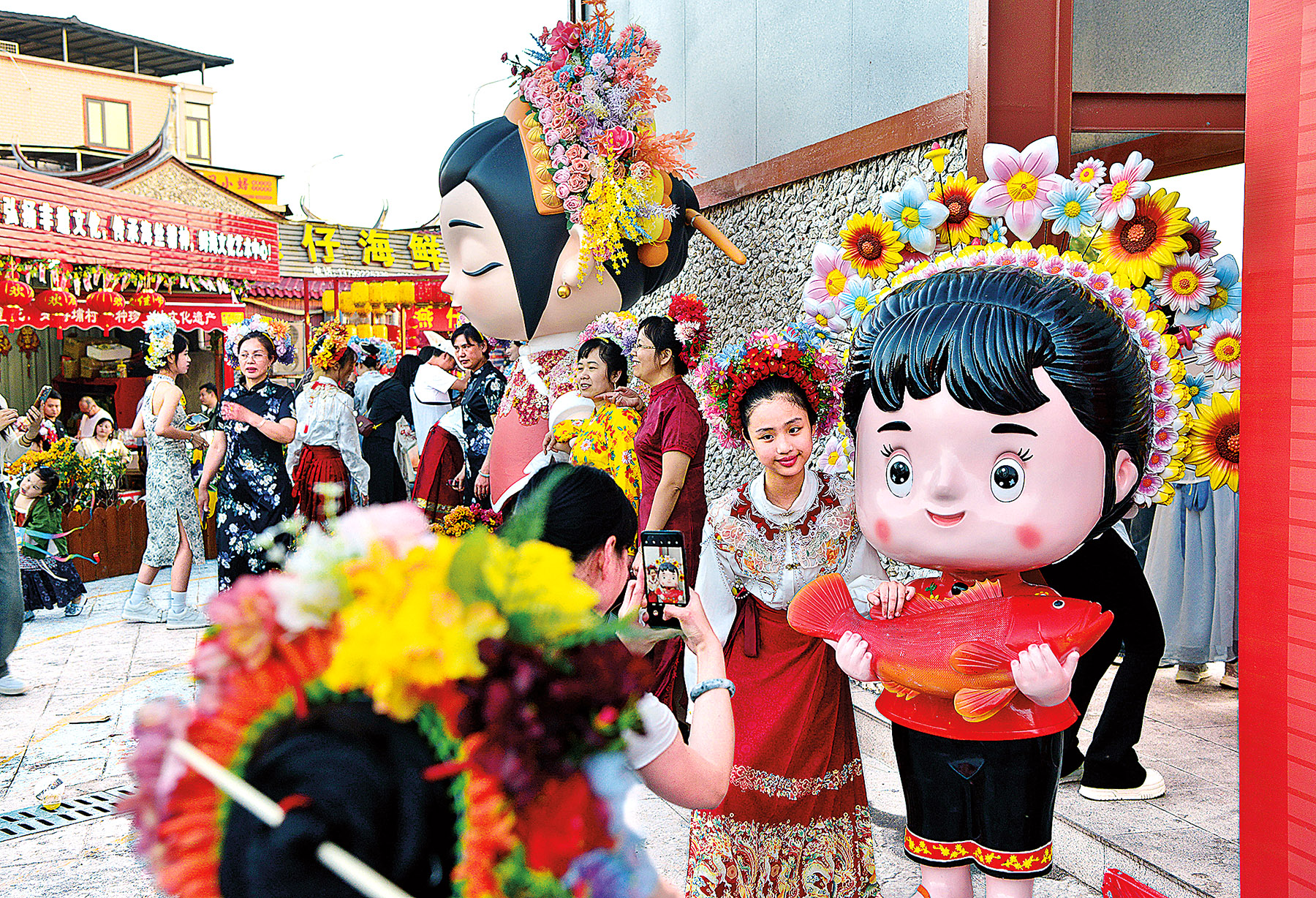
Huang felt compelled to try to preserve the tradition in the early 2000s when she sensed a decline in the observance of it among the young. Originally a kindergarten teacher, she taught her pupils about folk customs. In her spare time, she began to introduce the practice to visitors and acted as a bridge between them and the village elders.
The national status accorded to Xunpu women’s customs inspired her to commit to the headdress.
“I was 19 and I just followed my instincts,” she said, adding that she was not sure how far she would be able to go, as there were few visitors to the village, and young people were abandoning the tradition.
In addition to honing her headdress-making skills, Huang has taken part in exhibitions to promote the local culture.
“It takes about at least 10 minutes to put together a simple flower headdress the traditional way, using a variety of tools and layers of different flowers,” Huang said.
To cater to rising public interest, she has introduced many simplified versions of the headdress suitable for different hairstyles.
Her cause reached new heights seven years ago when she began sharing Xunpu headdresses on social media site Xiaohongshu.
“I was surprised that a few people found me through the platform, and they shared their headdresses on their accounts, which brought me more customers,” she said.
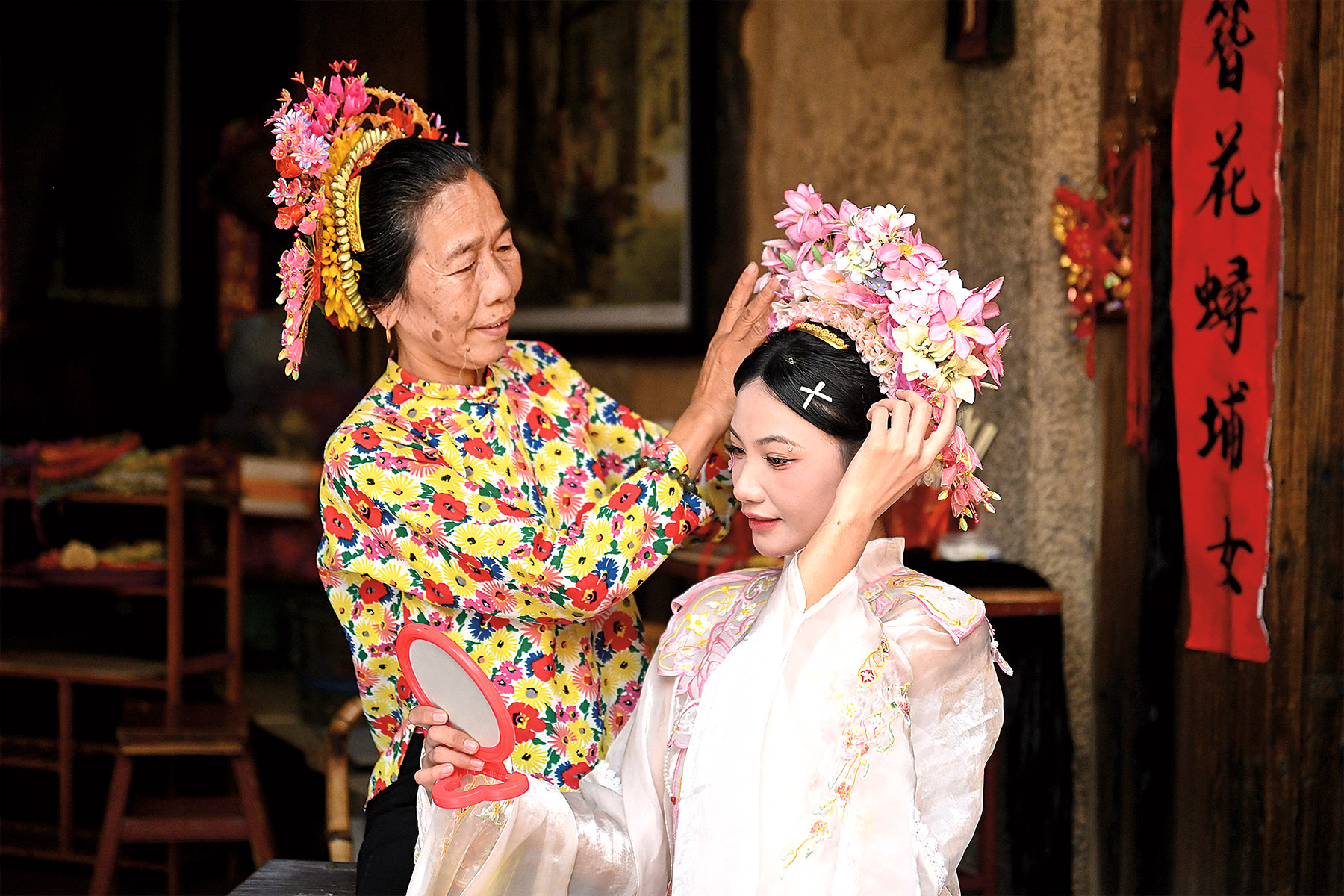
Huang has since become something of a celebrity, and she had the opportunity to do the hair of actress Zhao Liying at the beginning of 2023. “It was like opening a door to success,” she said.
Many visitors have come to the village asking for her help, while stage crews and professional stylists have sought to work with her.
Huang has even noticed an interest in her village’s traditions abroad, and saw firsthand how the headdress was appreciated by non-Chinese, including those she entertained during a cultural and tourism promotion event in Paris, France, last year.
“Although we couldn’t understand French, their gestures showed they loved our designs,” she said.
The rising popularity of its floral headdresses has put Xunpu on the tourist map.
According to Huang Xiangdong, a senior village official, Xunpu received more than 7 million visitors by November. The number peaked at 430,000 visitors during the National Day holiday in early October, more than double the arrivals during the same period in 2023.
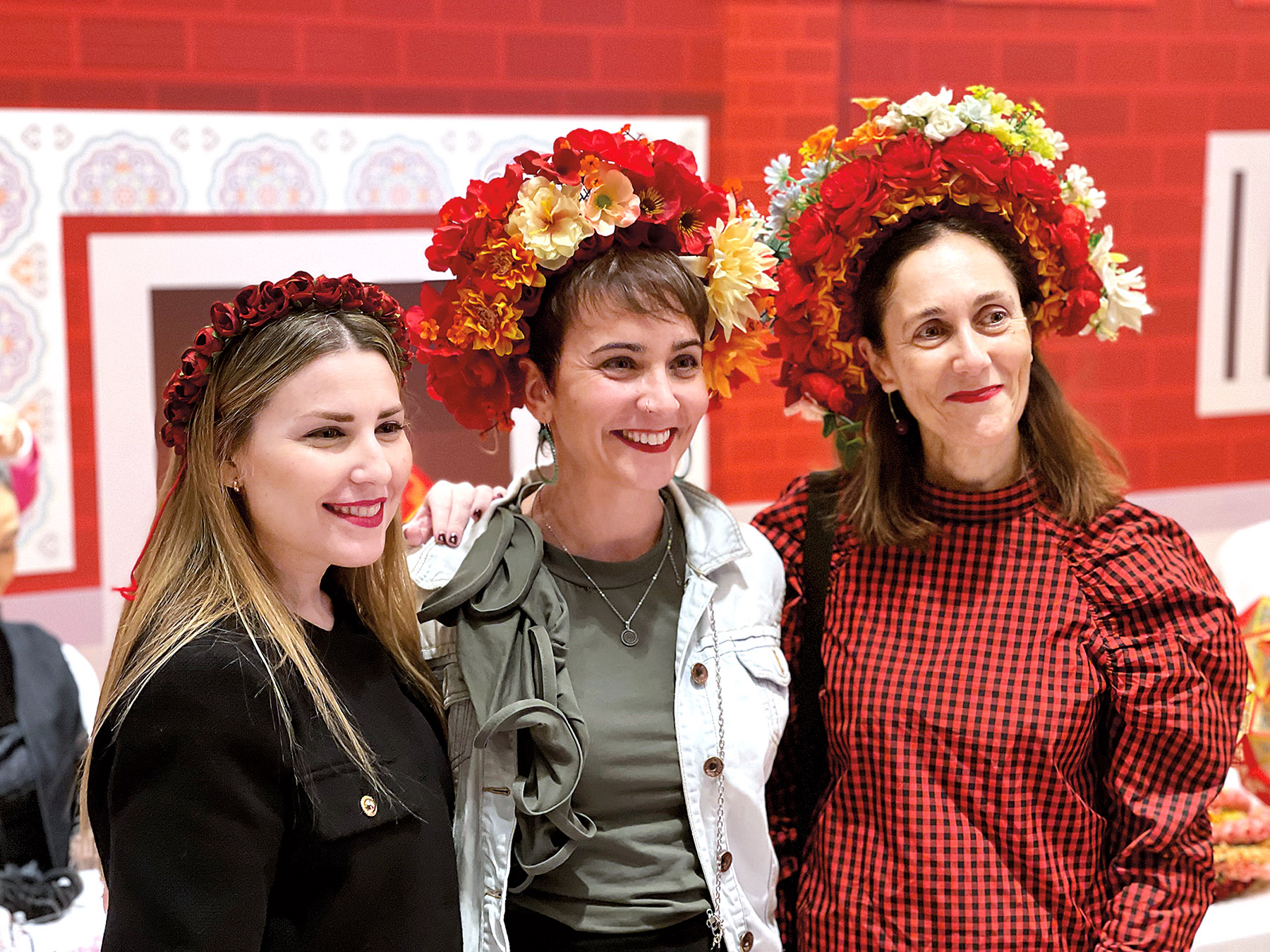
More than 200 headdress-themed photography workshops have been established. “At its lowest, there were only about 10 visitors to my studio in a month, but now, more than 500 come in a day,” Huang Liyong said.
On Xiaohongshu, some 500,000 posts appear under a search for “headdress in Quanzhou”.
The women of Xunpu have again taken a leading role in development, making up 90 percent of the workforce in the cultural tourism sector and making 90 percent of the cultural tourism income in Xunpu, according to local authorities.
In 2023, the village hosted an average of 50,000 visitors a day during holidays, with total annual tourism revenue exceeding 600 million yuan ($82.3 million).
In 2022, another local entrepreneur, Huang Yue, opened a shop in Xunpu that offers headdress-making, makeup, and photography services.
“We want to give customers an authentic experience of the tradition, with the headdresses made from scratch to go with traditional costumes,” said Huang Yue, who was born and brought up in the village.
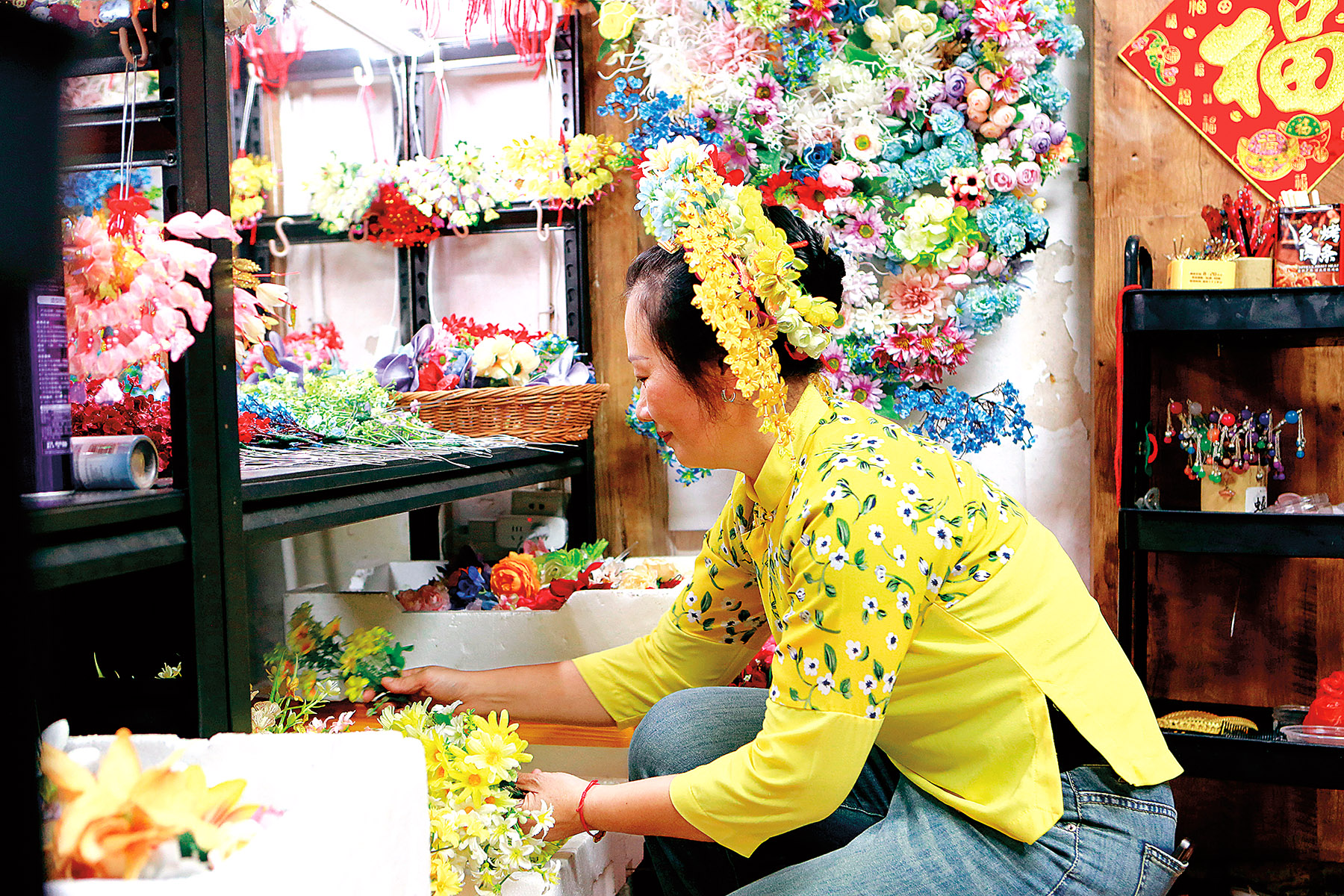
At its busiest, her shop can receive 100 clients a day, each of whom is willing to pay 300 to 400 yuan for the service.
Huang Yue said that her clients are mostly those who do not want to miss a step of the custom but want to experience it the local way. She is pleased that many of them have also recommended her to their friends.
Huang Liyong is proud to see the headdress tradition return, and said that many young people not only wear the headdress, but also learn about its culture and pass it onto people around them.
“Since I was a child, my elders have always told me that no matter how hard life gets, as long as there are flowers in your hair, life won’t be too difficult,” Huang Liyong said.
“I hope I can help convey to more people the enduring culture, spirit, and strength of our fishing village,” she added.


